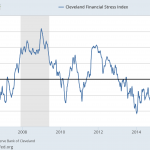
The Macroeconomic Spectrum: ECB in Focus….

On Thursday, 8 September, Mario Draghi (president of the ECB) indicated that the bank would hold off on additional quantitative easing measures. This comes despite economic forecasts being revised lower through 2018. No mention was made of the €80 billion per month asset purchases program at Thursday’s meeting. According to the ECB president, forecasts for growth were not sufficient to justify further quantitative easing. Instead, the European Central Bank (ECB) stressed that it would continue QE until March 2017, perhaps longer. The GC (Governing Council) of the ECB has maintained the deposit rate at -0.4% and the refi rate at 0%.
The approach adopted by the European Central Bank (ECB) had a positive impact on the EUR/USD pair. The currency pair rallied by 0.8% to 1.1325, and it was up at 0.8490 against the GBP. Currency traders across the board were going long on the EUR following the European Central Bank’s statement about unchanged policies. However, it is possible that an extension to the prevailing €80 billion per month in QE could be forthcoming with the December forecasts. Mario Draghi remains committed to evaluating all options available for the QE program, and it looks likely that a redesign and extension of QE policies is on the cards. The ECB is ready and willing to evaluate all available options. The European Central Bank (ECB) was recently anticipating Eurozone growth to hit 1.7% in 2016, up 0.1% from expectations in June 2016. The figures that have now been released indicate a growth projection of 1.6% for the following 2 years, down from 1.7%.
Inflation Targets and the European Central Bank (ECB)
In terms of inflation targets for 2016, growth is forecast at 0.2%. For 2017, growth is forecast at 1.2%, down from 1.3%. However, for 2018, the ECB is anticipating inflation growth of 1.6%. The majority of economists are of the opinion that the European Central Bank (ECB) will maintain its QE programme well into 2017. One of the problems facing the ECB with its bond buying program is that of scarcity. The rules currently in effect are making it difficult for the ECB to purchase as many assets as it wants, given that there are quotas in place.













Leave A Comment